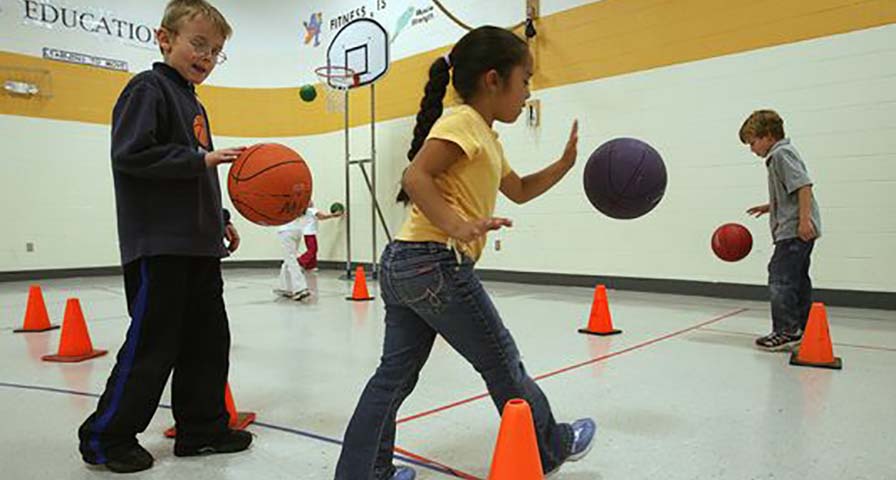Originally published Dec. 12, 2018 in USA Today.
By William E. Simon Jr., Opinion Contributor
Spot quiz: What is the only subject in school that engages a child’s mind, body, and spirit, promotes their physical and emotional health, helps them to learn better and cultivates the character they need to become productive adults? And what subject is consistently underfunded, understaffed and underscheduled?
If you answered physical education to both questions, you get an A grade.
 At a time when American children are increasingly absorbed in their screens and one-third are overweight, the need for robust physical education is acute. Last month, the federal government updated its recommendations for physical activity for the first time in 10 years. The guidelines now include recommendations for children as young as age 3 and advise a minimum of 60 minutes per day of moderate to vigorous activity for ages 6-17. Alas, only one in five teenagers meets this standard.
At a time when American children are increasingly absorbed in their screens and one-third are overweight, the need for robust physical education is acute. Last month, the federal government updated its recommendations for physical activity for the first time in 10 years. The guidelines now include recommendations for children as young as age 3 and advise a minimum of 60 minutes per day of moderate to vigorous activity for ages 6-17. Alas, only one in five teenagers meets this standard.
Inactivity has been called “the new smoking,” and the prevalence of obesity and inactivity may well mean children today will lead shorter lifespans than their parents. Children desperately need to learn the importance of physical fitness, how to achieve it, and how to maintain it. Well-taught physical education keeps students moving and motivated, building their competence and confidence so that they can stay fit over a lifetime.
Funding for PE classes is shockingly low
Alas, just when children need it most, PE has slipped to the bottom of the curricular ladder in all too many school districts. It is profoundly shocking that the median PE budget for American schools is only $764 a year, according to the Society of Health and Physical Educators. In a school of 500 students, that means only $1.50 per child for PE, when total per pupil annual expenditures in our public schools often exceeds $12,000.
This is of special concern in the inner city, where families have few fitness resources outside of school. But it is troubling everywhere, as a perfect storm of circumstances has conspired to minimize activity in children’s lives, not only putting them at risk for life-threatening diseases later on, but depriving them of the mental and cognitive benefits we know exercise provides. Harvard neuropsychiatrist John Ratey has called exercise “Miracle-Gro for the brain,” and hundreds of studies show exercise enhances learning as well as emotional health and social development.
We are also putting unfit children at financial risk as adults. Researchers at Johns Hopkins University have calculated that an overweight individual’s lifetime medical expenses related to his or her excess weight average $62,331, and lost wages around $93,100, roughly double the costs for a person of healthy weight— and enough money to put a child through college or make a down payment on a house.
Traditionally, schools have been instrumental in supporting children’s health, because they are uniquely positioned to reach the maximum number of children over a 12-year period. They help to ensure students are immunized, provide health screenings, and strive to serve nutritional meals. Physical education is every bit as important as the right shots and eating your vegetables, and yet not one state follows the Centers for Disease Control recommendations for time spent in PE at all grade levels. Some children with the means and desire to play sports get exercise that way, but the reality is that 70 percent of children drop out of organized sports by age 13.
Studies show kids in PE continue healthy habits
By contrast, regular PE class means all children can access the myriad benefits exercise provides until they reach adulthood – and beyond. According to the Physical Activity Council, children who have physical education in school are twice as likely to be active outside PE class and to remain active when they become adults. Correlation does not equate to cause, but it makes sense that children who learn good fitness habits in school will practice them out of school, and that a fit childhood sets a foundation for fitness as an adult.
While I appreciate the competing concerns schools must prioritize today, I believe it is time to make physical education a core subject on equal footing with academic classes. It is well established that children have a right to a quality education, and physical education is a fundamental aspect of that right, giving children the knowledge they need to stay healthy and equipping them for life’s challenges by teaching persistence, resilience, and positive thinking.
Our country boasts one of the highest standards of living in the world. Surely we can find a way to give our kids the gift of physical education and fitness. We did it in the past, when schools rallied behind JFK’s call for a fit nation as “a vital prerequisite to America’s realization of its full potential,” and we can do it again today. Indeed, some schools already have, and we can learn from them. All it takes is the will to make it happen, and Americans have always had plenty of that.
William E. Simon Jr., a former assistant U.S. attorney and the 2002 Republican nominee for governor of California, is co-founder of UCLA Health Sound Body Sound Mind and the author of “Break a Sweat, Change Your Life: The Urgent Need for Physical Education in Schools.”
Seeking IHT Spirit System information?




